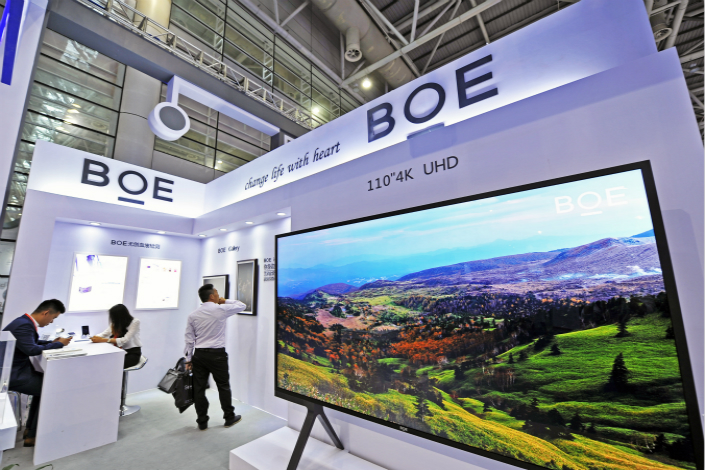BOE Technology to Build $7 Billion LCD Plant in Wuhan

One of China’s largest LCD panel makers BOE Technology will partner with the government of Wuhan to build a 46 billion yuan ($7 billion) production facility, reflecting the country’s ongoing efforts to create a world-class industry to compete with counterparts in South Korea and Taiwan.
BOE Technology Group Co. Ltd. will partner with the Wuhan city government and a local fund also based in Hubei province to build the plant for leading-edge 10.5-generation liquid crystal displays, the main component used to make large TVs and video screens.
The Wuhan government and the fund will initially invest up to 20 billion yuan in the project, while BOE will provide 6 billion yuan. The remainder of the 46 billion yuan investment will be split among the three parties in a manner to be determined later. The production line is expected to begin operation in 2019, with initial monthly capacity of 120,000 panels, mostly for LCDs of 65 inches and larger.
Beijing has made development of the country’s panel industry a strategic part of its national plan, providing strong support for such developments. The central Chinese city of Wuhan has emerged as one center for such production, becoming the first to host production lines from BOE and the country’s other top two players, TCL Corp. and Tianma Microelectronics Co. Ltd.
Rising prices for LCD panels dating back to last year’s fourth quarter may have helped drive the latest BOE investment.
But experts warn that the highly cyclical LCD panel industry may need to brace for a supply glut as a slew of new projects get built in China. Many 10.5- and 11th-generation production lines are now under development in China alone, and most are expected to begin operations in 2018 and 2019. Between 2011 and 2016, BOE and TCL benefitted from a combined total of more than 12 billion yuan in support from local governments and Beijing, company documents show.
China’s efforts to boost the industry also come as organic light-emitting diode (OLED) displays are increasingly popular, which could challenge demand for LCD panels over the longer term. OLED displays have the advantage of greater flexibility than LCDs, and can even be bent and folded.
“China should pay attention to the possibility of the LCD technology being disrupted and ramp up effects on research of non-LCD technologies” Guan Xudong, a professor from the College of Information Sciences and Technology at Peking University in a recent interview with China Electronics News.
Contact reporter Yang Ge (geyang@caixin.com)

- 1China Moves to Tighten Air-Quality Standards as Beijing Reports Best-Ever Skies
- 2Gansu Ex-Vice Governor Jailed 15 Years for Bribery, Insider Trading
- 3China Threatens EU After Carbon Border Tax Takes Effect
- 4Cover Story: How Resource Nationalism Is Redrawing the Global Mineral Playbook
- 5In Depth: China’s ‘Rain Belt’ Marches North, Unleashing Floods on Arid Lands
- 1Power To The People: Pintec Serves A Booming Consumer Class
- 2Largest hotel group in Europe accepts UnionPay
- 3UnionPay mobile QuickPass debuts in Hong Kong
- 4UnionPay International launches premium catering privilege U Dining Collection
- 5UnionPay International’s U Plan has covered over 1600 stores overseas





